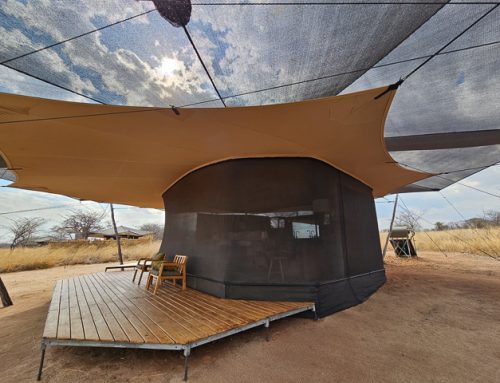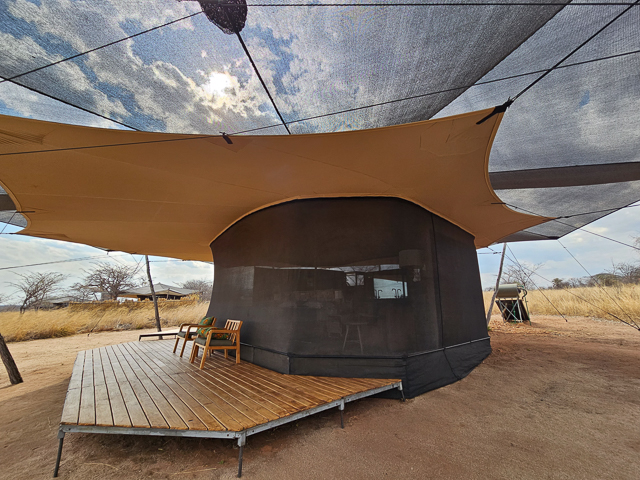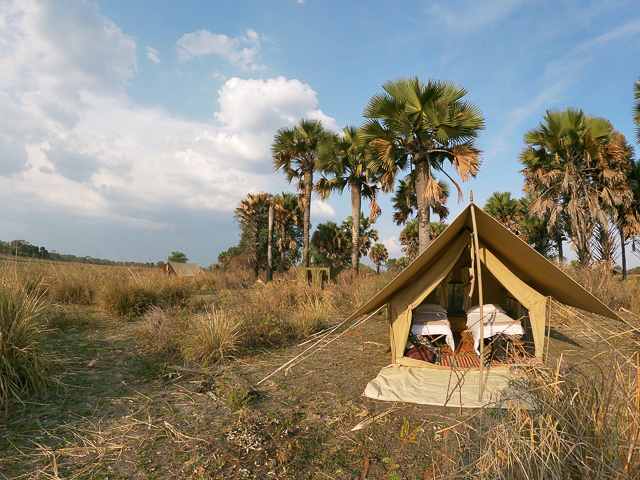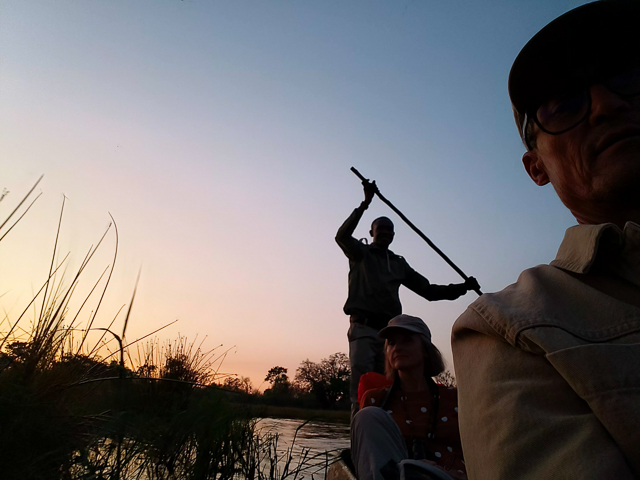The shoebill (Balaeniceps rex) is a somewhat enigmatic large stork-like bird that is found in swamps between Sudan and Zambia in Africa. While the Ancient Egyptians were familiar with this bird, it was not known to Europeans until the 19th Century.
Because it lives in such inaccessible and remote swamps, and because it is so strange-looking, it has become one of the most sort after species to find by bird enthusiasts.
While in Uganda my wife Gillian, and I were staying at the Semliki Safari Lodge in the far west of Uganda. We had heard that it was possible to see the shoebill in these territories hidden away in the reeds on the shores of Lake Albert.
We set off early in the morning by road with our driver and guide Joseph, for Ntoroko village on the lake shore. This is one of those fishing villages which initially look totally lost in time. Lots of smiling and laughing little kids surrounded us and started chatting in swahili (not knowing that Gillian and I are fluent speakers). Most Ugandans don’t speak swahili, but many of these inhabitants were Congolese. 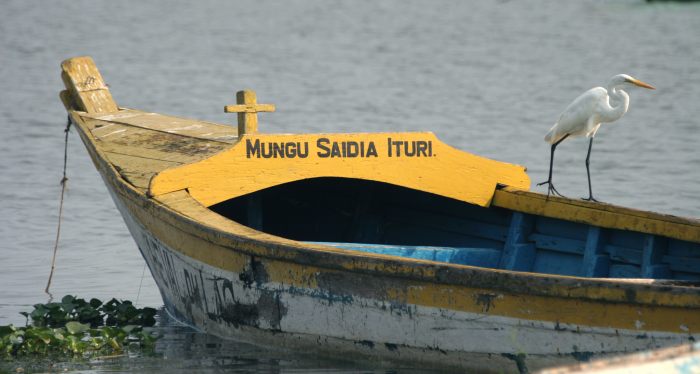
We motored past the docking bay for the little village which turned out to be a bustling port! We could see three or four big trucks loading up with fish to transport who knows where? Rumour has it that most of the fish caught on the Ugandan side of the lake is smuggled into the Congo!
After about half an hour motoring in open waters, we arrived at an area littered with water hyacinth (Eichhornia crassipes) islands. 
The hyacinth has very attractive attractive flowers. It was introduced from South America into the Nile river systems , and has since be
Then some fishermen hailed us “wazungu” (white men) and pointed deep into a papyrus swamp declaring in swahili that our quarry was over there! They obviously had come across eccentric white folk travelling miles to see this stork-looking bird before!
Soon after, I spied my first shoebill standing in the midst of the swamp all alone and looking quite content. It was so exciting to see a bird I had heard so much about for the first time, and to realise how precarious its existence is today, as it thrives in remote swamps. In most of Africa they have been left alone, but as human population increases, demand for well watered areas in an overall dry continent also increases, and the shoebill’s habitat is disturbed. Here on this very lake, the seventh largest in Africa, oil has been found, and a dispute has started between Uganda and the Congo over the exact location of the border. The quiet existence of this bird may well become precarious here, as human activity, and demand for resources, increases.
Justin
Visit the Cornell lab of ornithology page on the shoebill for more information.


